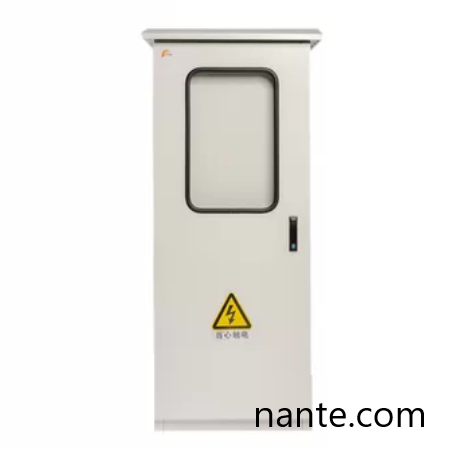-
Ροή Δημοσιεύσεων
- ΑΝΑΚΆΛΥΨΕ
-
Σελίδες
-
Ομάδες
-
Events
-
Reels
-
Blogs
-
Χρηματοδότηση
-
Developers
Nante Guide to Modular Distribution Socket Box Investment Decisions

In environments where power requirements shift rapidly—such as pop-up clinics, outdoor markets, and evolving production lines—a modular distribution Socket Boxcan offer tailored solutions without requiring a complete replacement when needs change. These units feature interchangeable modules for outlets, switches, and monitoring devices, allowing installers to configure each enclosure precisely. Yet the cost difference between a modular system and a fixed-configuration box often raises the question: is the flexibility worth the investment?
One clear advantage of a modular enclosure is adaptability. When a workspace adds a charging station or a new lighting circuit, technicians simply snap in the appropriate module rather than rewiring an entire panel. This approach reduces labor hours in fast-paced settings where downtime carries real consequences. Facilities that host seasonal events or rotate equipment regularly benefit from this plug-and-play convenience, staying aligned with shifting demands without significant reconfiguration delays.
Maintenance teams also appreciate the serviceability of such systems. Faulty modules can be swapped in minutes, minimizing disruption to other circuits. For example, if a monitoring sensor or surge protector stops functioning, replacing a single module avoids broad shutdowns. This targeted repair method reduces replacement waste and ensures that power delivery to critical devices remains uninterrupted, which is especially important in shared community spaces or hybrid work settings under frequent reorganization.
Despite these clear gains, the initial cost of a modular distribution box can be higher than that of a conventional unit. Custom enclosures require precision manufacturing and additional components, which translates to greater upfront expenditure. For organizations with stable power layouts and few planned changes, this premium may not pay off over the lifespan of the installation. Budget-conscious managers must weigh the potential savings in labor and materials against the initial price tag.
Space considerations are another factor. Modular systems often rely on deeper or wider enclosures to accommodate a variety of module types and future expansion. In cramped utility closets or behind fixed walls, a slimmer fixed-configuration box may fit more easily. Conversely, sites with generous space for utility installations find the added depth a small trade-off for future-proof flexibility.
Project timelines can influence the decision as well. Fast turnarounds—common in temporary setups like exhibition halls or emergency relief centers—benefit from preassembled modules that simplify procurement and assembly. Planners can order the exact mix of outlets, USB ports, and data connectors in one shipment, speeding the build process. In contrast, a standard panel may require multiple orders for each different component, introducing delays.
System complexity may intimidate smaller teams with limited electrical expertise. Although modular boxes are marketed for ease of use, configuring and labeling each module correctly requires careful planning. Errors in module placement or wiring can create unforeseen issues, so professionals recommend consulting with the enclosure maker or a qualified installer. When coupled with clear documentation and support, these units can match a wider range of scenarios than simpler fixed systems.
Energy efficiency and intelligent monitoring integrate naturally with module-based platforms. Teams can install power meters and remote control modules alongside traditional circuits, consolidating multiple functions in one enclosure. This capability helps facilities track usage patterns, detect anomalies, and respond swiftly to rising energy costs or shifting occupancy. Incorporating such technologies into a fixed box often demands separate housings or complex retrofits, reducing overall coherence.
When evaluating long-term value, consider the total lifecycle cost. A modular distribution Socket Box can reduce repeated material purchases, cut labor hours during upgrades, and lower waste from discarded panels. For organizations that expect growth, reconfiguration, or varied event schedules, these savings may outweigh the upfront investment. Conversely, for a static installation in a low-change environment, a simple fixed design may remain more economical.
Nante offers modular combined socket solutions designed to balance upfront costs with future adaptability. Their series provides clear guidance on module selection, enclosure sizing, and installation protocols, helping planners of all scales make informed choices. Whether you manage a community workshop, a field hospital, or an outdoor event site, exploring a module-based power distribution system can reveal benefits tailored to your operational style.
If flexibility and streamlined servicing appeal to your team's workflow, a modular distribution approach may deliver significant advantages over static panels. To review options and find the right mix of modules and enclosures for your application, visit www.nante.com, where you can explore detailed specifications, support materials, and purchasing guidance in one convenient location.
- Art
- Causes
- Crafts
- Dance
- Drinks
- Film
- Fitness
- Food
- Παιχνίδια
- Gardening
- Health
- Κεντρική Σελίδα
- Literature
- Music
- Networking
- άλλο
- Party
- Religion
- Shopping
- Sports
- Theater
- Wellness

